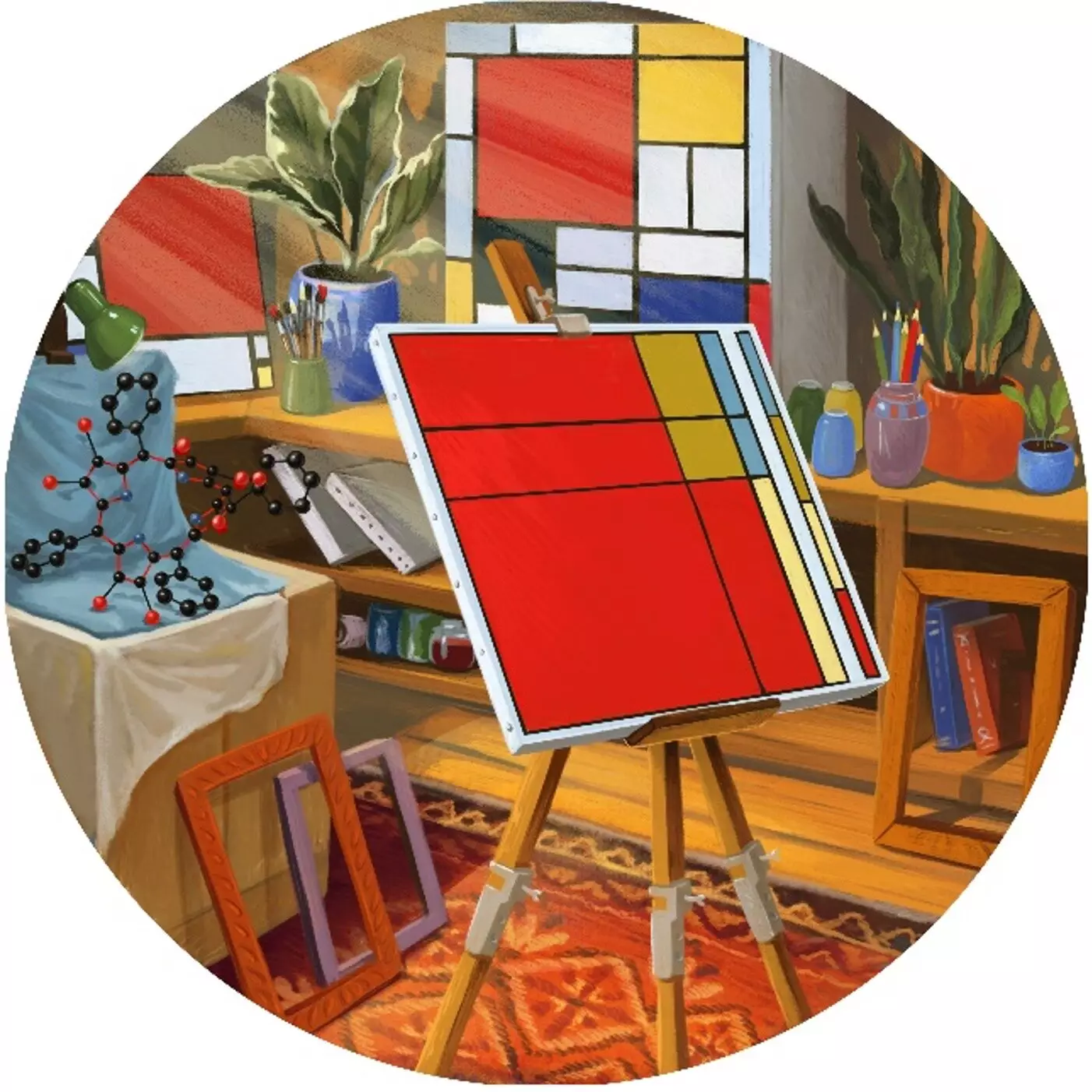At the crossroads of art and science, an innovative program developed by researchers at Trinity College Dublin is igniting conversations about the aesthetic dimensions of molecular chemistry. This groundbreaking initiative allows scientists to visualize molecular structures in the distinct geometric style of Piet Mondrian, a pioneering figure in modern art known for his vibrant compositions of colors and lines. This intersection isn’t just about merging two disciplines; it represents a profound shift in how we understand and represent scientific concepts, transforming the often opaque world of chemistry into an accessible visual language.
By employing an algorithm that captures the essence of Mondrian’s minimalist style, the researchers have crafted a tool that conveys the intricacies of molecular symmetry in an engaging and visually stimulating way. The program’s ability to portray any molecule with striking clarity challenges traditional representations while simultaneously enhancing the appreciation of molecular science for both scientists and non-experts alike.
The Artistic Algorithm and Its Significance
The algorithm developed by Mathias O Senge and his team does more than merely provide a visual representation of molecules; it reshapes how we perceive and communicate complex scientific information. By abstracting and simplifying molecular structures into blocks of color separated by lines—an homage to Mondrian’s signature technique—the researchers highlight the inherent symmetry and shape present in chemical compounds.
Professor Senge emphasizes the power of this artistic approach: “Symmetry and shape are essential aspects of molecular structure… But very often, relationships between chemical structure and derived values are obscured.” This tool not only enhances understanding for those in the scientific community but also fosters a more general appreciation for the beauty and complexity of molecular design among the public. By transforming molecules into art, the researchers appeal to our visual instincts, enabling a unique connection with scientific phenomena.
The Dialogue Between Scientific Rigor and Artistic Innovation
Christopher Kingsbury, the postdoctoral researcher who conceived this concept, believes that presenting chemistry through an artistic lens can bridge the gap between the two fields. “In chemistry, it is useful to have a universal way of displaying molecular structure,” he notes, suggesting that this representation can serve as a blueprint for predicting how molecules will behave in various environments. However, as Kingsbury acknowledges, the process of abstraction—while beneficial—can lead to the loss of nuanced details that are crucial for a complete understanding of molecular behavior.
This dialogue between scientific accuracy and artistic innovation raises essential questions about representation in both fields. In a sense, the algorithm doesn’t just display molecules; it recontextualizes them. Just as Mondrian’s work conveyed emotions and ideas through simplicity and structure, the researchers’ program invites us to reconsider how we visualize and interpret complex scientific data.
Revolutionizing Understanding of Molecular Chemistry
The implications of this artistic approach extend beyond aesthetics; they potentially reshape our understanding of chemistry itself. The team’s previous work on porphyrins—referred to as the “colors of life”—underscores the versatility of these molecules in biological systems. Now, by infusing artistic interpretation into the study of such compounds, the researchers may uncover new insights into how structure correlates with function.
As these scientists utilize Mondrian’s principles in their exploration of molecular dynamics, they are effectively challenging the stereotypes that separate art from science. This initiative paves the way for new educational frameworks that integrate artistic methodologies into scientific pedagogy, promoting greater engagement with the sciences through creative avenues.
A Shared Appreciation for Symmetry and Beauty
Beyond the walls of academia, this fusion of art and science has the potential to inspire a broader audience. The visual allure of these Mondrian-inspired representations can cultivate curiosity about molecular chemistry among individuals who might otherwise feel intimidated by the complexities of the subject. In essence, great art is not just a representation of the world; it can also inspire a new perspective on understanding it.
As Professor Senge notes, “Great art gives us a new perspective on the world,” and this sentiment rings true in the application of his team’s innovations. By allowing us to view familiar molecules in a fresh light, they elevate our understanding of chemistry and ignite a passion for learning that transcends traditional boundaries. In today’s world, where interdisciplinary approaches increasingly dictate the future, merging scientific inquiry with artistic endeavor may very well be the key to unlocking new realms of knowledge and discovery.

